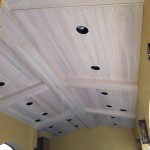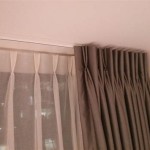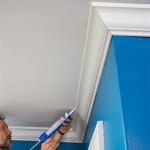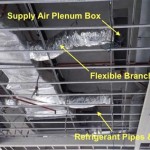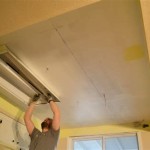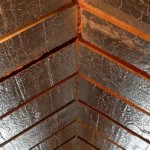What is the Quietest Ceiling Fan?
The quest for the quietest ceiling fan is a common pursuit for homeowners seeking comfort without the distraction of unwanted noise. A ceiling fan's primary function is to circulate air, providing cooling in summer and assisting with heating distribution in winter. However, the operational noise of some models can be intrusive, affecting sleep, concentration, and overall quality of life. Identifying the factors that contribute to noisy operation and understanding the features of models designed for quiet performance are crucial in selecting the most suitable option.
The perception of noise is subjective, but measurable acoustic metrics exist. Fan noise is typically measured in decibels (dB). A lower dB rating generally indicates a quieter fan. However, the frequency of the noise is also significant. Low-frequency hums or rumbles can be more bothersome than higher-frequency sounds, even if the dB level is similar. Therefore, specifications alone are not always sufficient; user reviews and independent testing can provide valuable insights into the real-world noise levels of various models.
Furthermore, the installation process significantly impacts fan noise. Improper installation, loose screws, or an unbalanced blade assembly can all contribute to unwanted vibrations and noise. Even the type of ceiling and the mounting surface can influence sound transmission. A solid, well-insulated ceiling will absorb more vibrations than a thinner, less rigid surface.
Several manufacturers now prioritize quiet operation in their fan designs, incorporating features such as DC motors, balanced blade sets, and dampened housing materials. Understanding these design elements and their contribution to reducing noise is essential for informed decision-making.
Key Factors Contributing to Ceiling Fan Noise
Several factors combine to determine the overall noise level of a ceiling fan. Identifying and understanding these contributing elements is crucial for selecting a quiet model and ensuring optimal long-term performance.
1. Motor Type: The type of motor used in a ceiling fan is a primary determinant of its operational noise. Older models often use AC (Alternating Current) motors, which tend to be louder and less energy-efficient than newer DC (Direct Current) motors. AC motors operate at a fixed speed dictated by the frequency of the power supply. This can lead to abrupt starts and stops, as well as a humming or buzzing sound, especially at higher speeds. DC motors, on the other hand, use electronic circuitry to control the fan's speed. This allows for a wider range of speeds, smoother transitions between speeds, and significantly quieter operation. DC motors also typically consume less energy, making them a more sustainable and cost-effective choice in the long run.
2. Blade Design and Balancing: The design and balance of the fan blades also play a significant role in noise generation. Unevenly weighted or poorly balanced blades can cause vibrations, leading to rattling and humming sounds. The shape and pitch of the blades influence the airflow and the amount of wind noise produced. Blades designed with aerodynamic principles in mind can move air more efficiently and with less turbulence, thereby reducing noise. Manufacturers often use materials such as high-quality plastics, wood laminates, or metal alloys to ensure blade stability and minimize vibration. During manufacturing, careful balancing of the blade set is critical. Some manufacturers even include balancing kits that allow users to fine-tune the balance after installation to address any minor imbalances that may arise during shipping or handling.
3. Housing and Mounting System: The housing of the fan, including the motor housing and any decorative components, can also contribute to noise. Loose or poorly secured parts can vibrate against each other, creating rattling sounds. The material used in the housing and its construction also affect sound transmission. A solid, well-damped housing can help to absorb vibrations and reduce noise levels. The mounting system used to attach the fan to the ceiling is another critical factor. If the mounting bracket is not securely fastened or if the ceiling junction box is not properly supported, vibrations can be amplified and transmitted through the ceiling structure. Using a high-quality mounting bracket and ensuring proper installation are essential for minimizing noise.
Features to Look for in a Quiet Ceiling Fan
Several design features and technologies contribute to reducing noise levels in modern ceiling fans. Recognizing and prioritizing these features when selecting a fan can significantly improve the user experience.
1. DC Motor Technology: As previously mentioned, DC motors are generally quieter and more efficient than AC motors. Look for fans that specifically advertise the use of a DC motor. These motors often come with a wider range of speed settings, allowing for greater control over airflow and noise levels. Some DC motor fans also feature a "sleep mode" or "breeze mode" that automatically adjusts the fan speed to create a more comfortable and quiet environment. It is also beneficial to check the motor's specifications for its sound rating, if available.
2. Aerodynamically Designed Blades: Aerodynamic blade designs minimize turbulence and reduce wind noise. These designs often feature curved or angled blades that move air more efficiently. The number of blades can also influence noise levels. Generally, fans with fewer blades tend to be quieter, although this can depend on the specific design. Look for blades made from high-quality materials that are less prone to warping or vibration. Composite materials or well-cured wood laminates are often good choices. Read product descriptions carefully to understand the materials used and any specific features related to blade design and noise reduction.
3. Dampening and Vibration Isolation: Some manufacturers incorporate dampening materials or vibration isolation techniques into their fan designs to further reduce noise. This may involve using rubber grommets or other flexible materials to isolate the motor from the housing or to dampen vibrations within the housing itself. Look for fans that advertise features such as "noise dampening technology" or "vibration isolation mounts." These features can help to significantly reduce the transmission of noise from the motor and blades to the surrounding environment. Check user reviews to see if other customers have reported positive results with these features.
Ensuring Quiet Operation Through Proper Installation and Maintenance
Even the quietest ceiling fan can become noisy if it is not installed correctly or if it is not properly maintained. Proper installation and regular maintenance are crucial for ensuring long-term quiet operation.
1. Secure and Stable Mounting: The most critical aspect of installation is ensuring a secure and stable mounting. The ceiling junction box must be properly rated to support the weight of the fan. If the existing junction box is not rated for ceiling fans, it must be replaced with a fan-rated box. The mounting bracket should be securely attached to the junction box and to the fan motor housing. Use all the provided screws and hardware, and tighten them securely. Avoid over-tightening, which can damage the components. Depending on the fan model and the ceiling construction, additional support may be needed, such as bracing between joists.
2. Blade Balancing: Even with meticulously designed and manufactured blades, minor imbalances can occur during shipping or handling. Most ceiling fans come with a blade balancing kit that includes small weights that can be attached to the blades to correct any imbalances. Follow the instructions provided with the balancing kit to identify and correct any imbalances. Start by checking for noticeable vibrations or wobbling while the fan is running. Then, systematically add weights to the blades until the vibration is reduced or eliminated. This process may require some trial and error, but it can significantly improve the smoothness and quietness of the fan's operation.
3. Regular Cleaning and Tightening: Dust and debris can accumulate on the blades and motor housing, contributing to noise and reducing the fan's efficiency. Regularly clean the blades with a soft cloth or vacuum cleaner. Periodically check all screws and connections to ensure they are tight. Loose screws can cause vibrations and rattling sounds. If you notice any loose screws, tighten them carefully. If any parts are damaged or worn, replace them promptly with genuine replacement parts. Regular maintenance can help to prevent noise problems and extend the lifespan of the fan.
By carefully considering the factors that contribute to ceiling fan noise, choosing models with specific noise-reducing features, and ensuring proper installation and maintenance, it is possible to find a ceiling fan that provides comfortable airflow without unwanted noise. Careful research and attention to detail can significantly improve the user experience.

5 Quietest Ceiling Fans Available Right Now Advanced Systems Fan Quiet With Light

The Best Ceiling Fans For Bedrooms By Size Fan Feature Delmarfans Com

The Best Ceiling Fans For Bedrooms By Size Fan Feature Delmarfans Com

Quiet Ceiling Fans

The Best Ceiling Fans For Bedrooms By Size Fan Feature Delmarfans Com

Top 10 Rated Quiet Ceiling Fans For Sleeping

Aoibox 46 White Ultra Quiet Ceiling Fan With Led Light And Remote Control 6 Sd Dc Motor Energy Efficient W 3 Color Snmx2840 The Home Depot

6 Sd Ultra Quiet Ceiling Fan Matt Black Walnut Wood Blades With Led Light Remote Control Timer Reversible Functions Diy At B Q

Quiet Ceiling Fan With Led Light And Remote 32 Inch Large Air Volume Reversible Dc Motor White For Kitchen Bedroom Dining Room Patio Com

5 Quietest Ceiling Fans Available Right Now Advanced Systems In 2024 Quiet Fan Bedroom Simple
Related Posts

